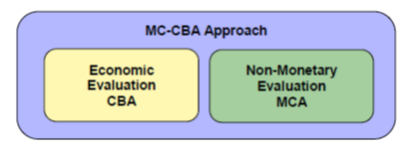Smart grid technologies represent different ways to enhance the effectiveness of the power distribution and transmission system by making it possible to use existing power infrastructure more efficiently. Implementation of smart grid solutions could for instance, represent an alternative to investment in new power generation capacity or new power lines.
Many new smart grid technologies are available, but not yet deployed. In order to advance implementation, governments and other investors need decision support to evaluate investments in smart grid technologies.
Cost-benefit analysis (CBA) offers a systematic process for comparing the advantages and disadvantages of a smart grid initiative from society perspective.
This report presents a mapping and analysis of existing literature on social costs and benefits of smart grid solutions and identifies gaps in current guidance. The study also includes a review on how network regulation affects incentives to invest in smart grid technologies and an analysis on how CBA constitutes an important input to the design of the network regulation. The report also serves as a basis for selecting models and methods to be used by the Swedish Smart Grid Forum in order to assess different smart grid projects and applications.
Due to the multifaceted and broad nature of smart grid technologies, CBA of smart grid deployment is complex as smart grid technologies provide benefits on a system level as well as on the project level. Smart grid technologies are also under fast development, which lead to a lack of data and uncertainty when extrapolating results from pilot projects to the system level.
Energy and climate goals as those identified on the European level as well as on a national levels aim to increase renewable energy, improve energy efficiency and reduce carbon emissions. Smart grid technologies contribute to all these goals, not only directly but to large extent indirectly, which calls for comprehensive evaluation methodologies on a system level. Comprehensive analyses on the system level can provide input to CBA.
The aim of CBA is to identify all the gains and losses (benefits and costs) created by an initiative. The intention is to express the gains and losses in monetary terms irrespective to whom they accrue.
On a general level, CBA contains three mains steps. These are identification, quantification and valuation of the benefits and costs.
